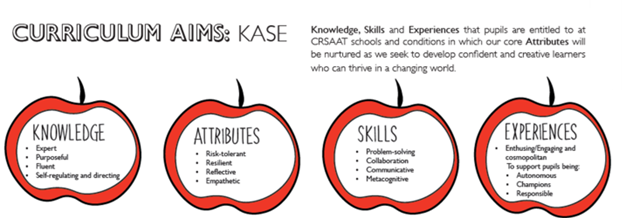Design and Technology
Design & Technology
Our Central Region Schools Trust (CRST) rationale is built on the following four cornerstones: Knowledge, Attributes, Skills, and Experiences (KASE). This rationale underpins the curriculum design process, ensuring that our pupils can access a thorough and engaging learning journey in Design and technology.
The DT curriculum has been curated by subject specialist teachers using KASE. Projects have been selected to ensure that the knowledge and skills being taught are sequential, enabling students to build on their previous experiences in KS2 and progress through KS3 & KS4.

Our vision for KS3 Design & Technology
At Waseley Hills High School, the KS3 Design and Technology curriculum is delivered through a rotation of 3D Design, Food Technology and Graphic Design. Students spend a term in each one of the disciplines. After a term of studying one subject, students then rotate in a ‘carousel’ style into the next subject, this ensures that each student can experience all three DT disciplines each year.
Design and Technology is a practical, rigorous and inspiring subject. Using creativity, pupils design and make products that solve relevant problems within a variety of contexts, considering both their personal needs as well as the demands and values of consumers. They acquire a broad range of subject knowledge and draw on disciplines such as mathematics, science, engineering, computing and art. Pupils learn how to take risks, becoming resourceful, innovative, enterprising and capable citizens. Through the evaluation of past and present design and technology, students develop a critical understanding of its impact on daily life and the wider world. High-quality design and technology education makes an essential contribution to the creativity, culture, wealth and well-being of the nation.
The content of our curriculum for Design & Technology
As well as KASE, the curriculum is also built upon the four national curriculum principles of: Technical Knowledge, Design, Make and Evaluate:
Technical Knowledge:
Students are taught to understand and use the properties of materials and the performance of structural elements to achieve functioning solutions. Being able to understand the properties, capabilities and limitations of materials is vital to be able to arrive at a design solution.
Design:
Students will also develop the skills necessary to inform the design of innovative, functional, appealing products that respond to needs in a variety of situations. They will use a variety of approaches to generate creative ideas and avoid stereotypical responses. Students will develop and communicate design ideas using annotated sketches, detailed plans and 3-D modelling.
Make:
Students select from and use specialist tools, techniques, processes, equipment and machinery precisely, including computer-aided design. They can select from and use a wider, more complex range of materials, components and ingredients, considering their properties.
Evaluate:
Students analyse the work of past and present professionals and others to develop and broaden their understanding. Test, evaluate and refine their ideas and products against a specification. Understand developments in design and technology, its impact on individuals, society and the environment.
Curriculum Aims (KASE):
Knowledge
Our curriculum for Design and Technology aims to ensure that all pupils develop the creative, technical and practical knowledge needed to allow them to generate their own creative ideas. The specialist knowledge gained in DT is applied when students arrive at their design solutions and create their own functioning products/dishes. Students develop a repertoire of knowledge and understanding that spirals through the key stages.
Attributes
Students are given time within practical lessons to explore and experiment with materials and ingredients. This exploration allows students to take risks and reflect on their experiences, making them more resilient.
Skills
Practical skills are a fundamental element within DT. Students are taught how to use a variety of specialist tools, equipment and techniques to design and create high-quality prototypes, products and dishes for a wide range of users.
Experiences
Through a delivery of engaging theory and practical lessons, students can foster a love for design and technology. By offering a broad DT curriculum, students are given a wealth of transferable skills and knowledge that allows them to become well-rounded individuals that can apply themselves in both their professional and personal lives.
Inclusion
The delivery of our DT curriculum aims to empower learners at all levels. Class teachers are trained in how to adapt their teaching to ensure all students can learn and make progress within their subject area. Our curriculum contains within it the national curriculum plus elements that add further depth to help stimulate students and provide challenge. The mix of theory and practical lessons make it an engaging experience for all.
Overview and Assessment Information
Please refer to the subject Curriculum and Assessment Overview document for an overview of specific topics and assessments.
Assessment timeframes can be found in the subject Scheme of Assessment.

